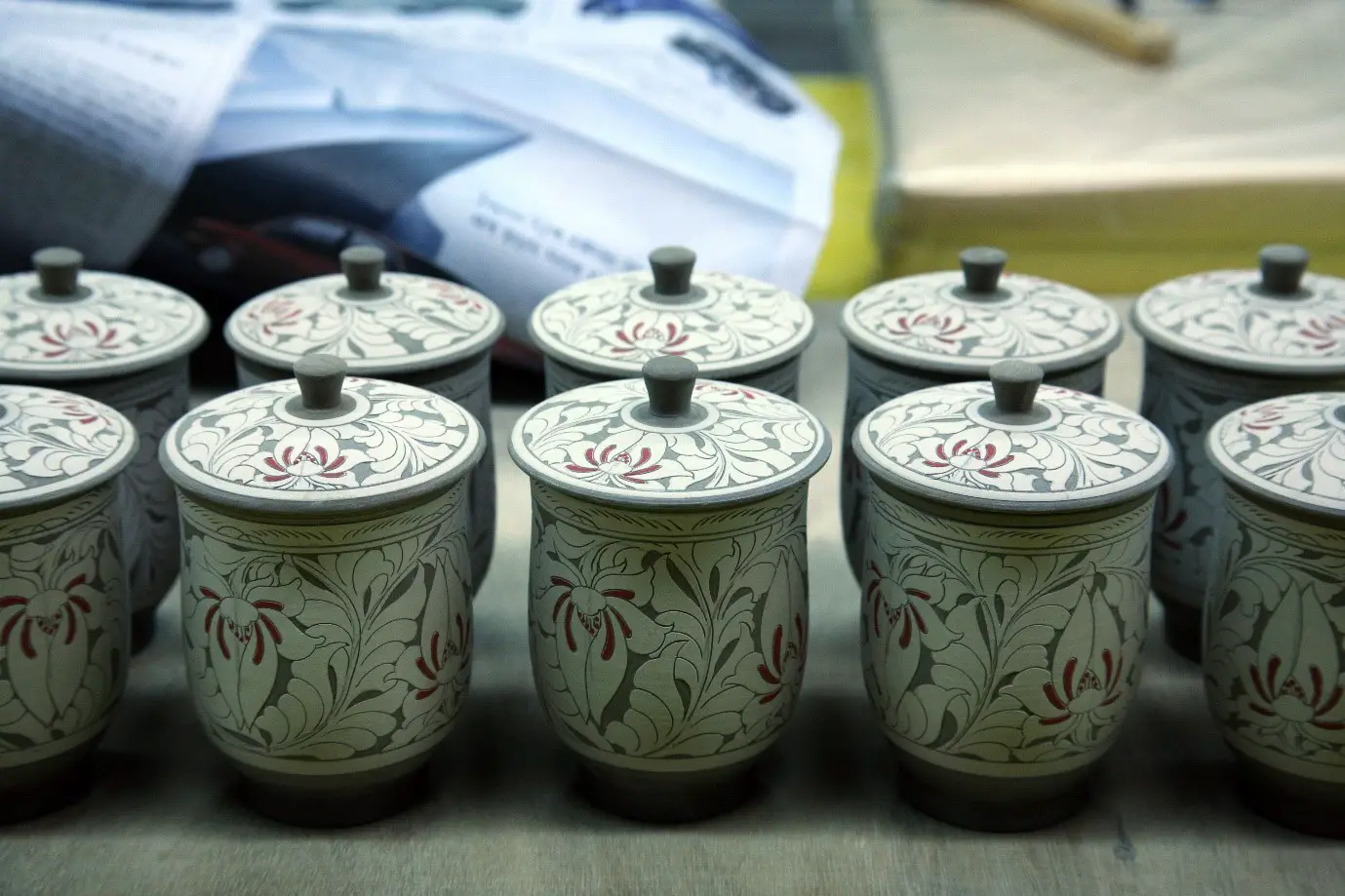Glazing serves various purposes in pottery. It adds a safe coating to your bisque-fired wares, making it food-safe and waterproof. Also, it gives you enough room to play with your creativity. It enables you to have fun with different colors to bring life to your pottery piece. There is no limit to the experiments that you can do while glazing your pot.
However, people often confuse pottery glaze with painting colors. But both of them are pretty different; the components of pottery glaze are also quite different from the painting colors. But both these compounds help in enlivening your art. Glazing holds the capacity to transform any regular piece of pottery into an astonishing piece of art.
So, here in this article, we will highlight the different types of pottery glazes used in crafting beautiful artwork.
What is Pottery Glaze?
Nowadays, most potters prefer glazing their pots. But do you know what glaze is and how to apply it to a pot? A pottery glaze is a resistant layer of a glass-like substance, which gets amalgamated on a pottery item when placed in a kiln at high temperatures. It enhances the aesthetic and functional value of an object. The glaze adds to the strength of the pottery item by giving it a tougher and smoother surface.
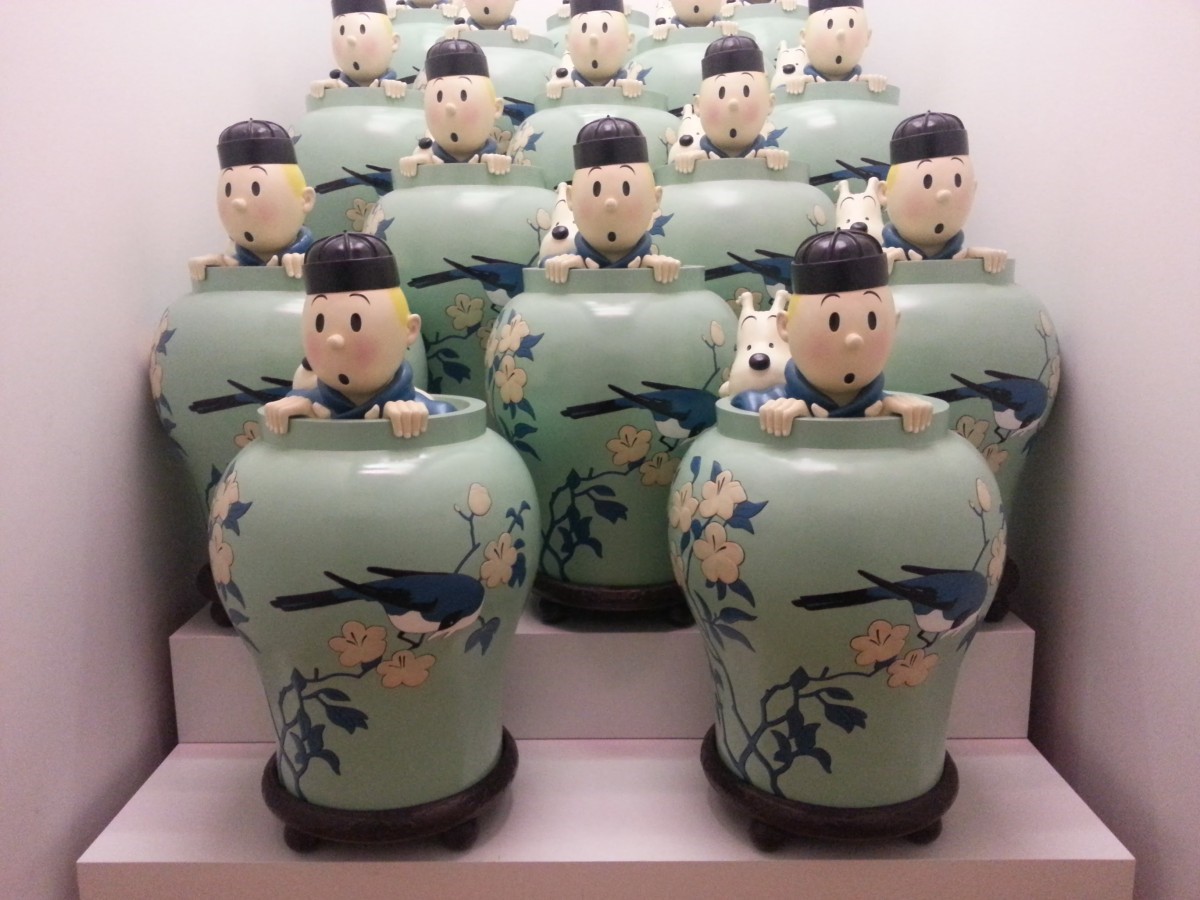
Glazing is a long and involved process that requires a lot of creativity to mix and create several designs. It might seem to be a complicated and laborious process in the beginning, but everything requires practice. You need to have an ardent understanding of the temperature at which you are firing your glazed pottery and what purpose do you want it to serve.
| Name of the Components | Properties |
Silica | It turns into a glass-like substance when heated above 3100°F in the kiln. Flint is added along with Silica sand to provide a great finish to the pottery. |
| Alumina | It helps the glaze to stick correctly onto the clay surface. It keeps the glaze intact and doesn’t let it run off the piece when heated at high temperatures. |
| Flux | It helps to melt the flint. There are various types of flux for you to choose from, like ash, bone, iron, zinc, sodium, etc. |
| Colorants | They are whitening agents like iron oxide, talc, and chromium oxide. |
| Modifiers | These are used to change the surface of the glaze. Modifiers affect the transparency and opacity of the glaze. |
However, besides the above-stated components, Modifiers come in 5 different varieties, namely:
- Opalescence- It reflects the lustrous light on the glazed finish of the pot.
- Bentonite- It holds all the components into suspension, while they are under the firing process.
- Opacifiers- They give an opaque or white background to the glaze. Bone ash and tin oxide are two different and widely used Opacifiers.
- Suspenders- These help to keep the heavy components of the glaze from coming off after the firing process is over.
- Gums- They help to add toughness to the glaze and aid in protecting the finish before it is fired at very high temperatures.
Types of Pottery Glazes:
There is a wide range of pottery glazes available in the market. We can categorize these glazes based on their origin and temperature tolerance. Now, let’s have a glance at them one by one:
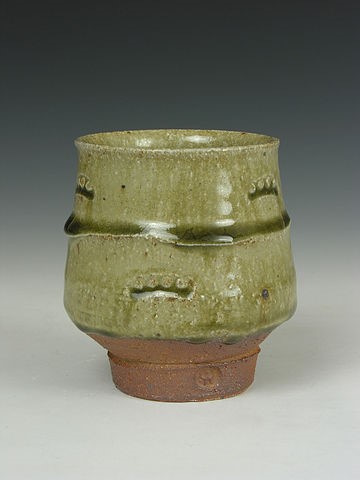
1. Traditional Glazes:
These glazes have been used for centuries and are named after their principal fluxing agent. The following are some of the types of glazes that fall under this category.
-
Ash Glaze:
It is made from plants or wood ash. It is bio-degradable. This type of glaze contains Potash and lime; hence, they have a naturally acidic tendency. Ash Glaze has been used widely in East Asia.
-
Feldspathic Glaze:
It is made up of tectosilicate minerals and contains glazes of porcelain. It comes in pink, white, brown, grey, or blue color.
-
Lead Glazes:
This glaze becomes shiny and transparent after firing. Lead glazes are the widely used ones because of the effect that they produce after firing on the pottery piece. They come in both plain and colored forms. For a long time, they have been the most commonly used glazes in China, the Mediterranean, and Europe.
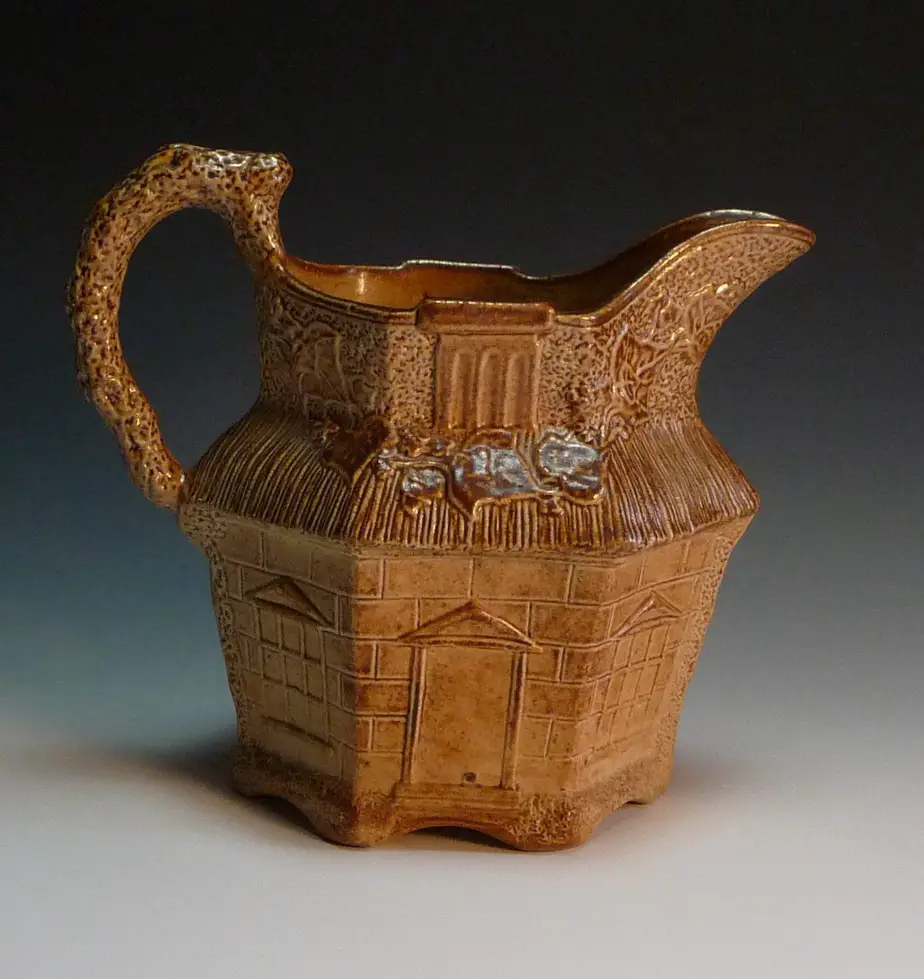
-
Salt Glazes:
Common salt is the main ingredient. These glazes have a translucent, glossy, and orange-peel-like texture. It is thrown straight into the kiln at a high temperature during the firing process. It must be noted that this glaze can be colorless, brown, blue, or purple.
-
Tin-glazes:
This particular glaze has played an essential role in Islamic Pottery. Tin-glazed pottery is simply lead glaze combined with tin oxide. It is shiny and opaque and provides the right background for enhancing the bright paints used for the decoration of your pot.
2. Contemporary Glazes:
Pottery is eternal, and it has been loved in all parts of the world. With the enhancement in technology and change in the art and aesthetics of the modern world, the traditional glazes have been modified to fit in the contemporary world’s needs. Following are some of the contemporary glazes:
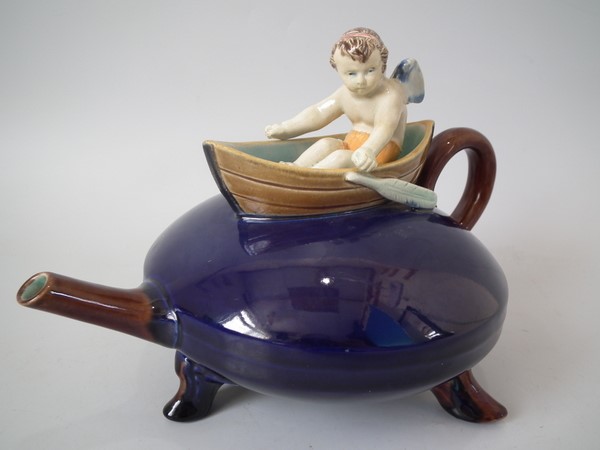
-
Earthenware Lead-Free Glazes:
As the name suggests, these glazes are free from harmful chemicals like lead. Thus, they are safe for the environment while also being safe for storing any kind of food and drink item. Also, there is an endless variety of colors available in this type of glaze to satisfy your aesthetic cravings. It is the most widely used pottery glaze in the present times because of its environmental concerns.
-
Earthenware Glazes Containing Fritted Lead:
These glazes already have lead in them and hence are very stable. Lead helps to achieve an exclusive look in the pottery items, which is incomparable. If you use bi-silicate frit instead of red and white lead, then you can make your pottery item non-toxic and food-safe to a certain extent. You need to be extra-cautious while firing it because, at higher temperatures, it might release toxic substances.
-
Stoneware and Midfire Glazes:
These glazes have maximum stability in any kind of oxidizing and reducing conditions. There is a wide variety of color ranges available in it. They can be mixed and matched to produce various effects and patterns on the pot surface, which serve to be an absolute delight to the eyes.
This glaze allows you to double-dip, mottle, pour, or paint on different other glazes. Thus, it gives you the maximum room to showcase your creativity – these glazes fire between 1280-1300°C.
-
Raku Glazes:
These glazes come in two different forms, namely powder, and liquid. It allows you to have a wide range of color variations after the completion of the firing process. The Raku glazes often enhance their colors and appearance during the firing process. The final product is a bit different but better than before.
3. Types of Glazes Based on Temperature:
Glazes can be categorized based on firing temperature range too. Temperature plays a huge role in determining the type of glaze that you can use for a particular clay pot. There are generally 3-ranges of pottery glazes based on temperature.
These ranges are referenced through the cone rating system. Cones can be termed as small cone-shaped ceramic pieces that are to be placed in the kiln to indicate the maturity of the pottery piece.
All of these have different melting points and are to be used at specific temperatures only.
| Temperature | Low Fire 1830-1940°F | Mid Fire 2157-2232°F | High Fire 2305-2381°F |
| Cone Size | 06-04 | 4-6 | 8-10 |
| Property | They produce intense colors without requiring much fire in electric kilns. | They produce vivid colors at medium fire and are done in electric kilns. | Gas kilns are used to produce such a large amount of fire to produce great colors. |
| Usage | Economical | Functional | Commercial |
Please be extra cautious with the temperature while performing the firing process. Overfiring can cause the clay to melt down from the pot. It results in the aggregation of glaze at the bottom of your pottery piece. It might also result in blistering, pin-holing, or pitting. They don’t look good at all. Similarly, underfiring can make your glaze look dull or cloudy. It can also result in a rough texture.
Tips to Follow While Choosing Pottery Glazes:
While performing glazing from scratch at home, you need to consider certain things before you proceed to choose pottery glazes. So, let’s have a glance at some of the factors that you must look into before beginning with glazing.
-
Type of Kiln:
There are several ways of firing glazed pottery, but the most common and efficient tool is the kiln. There are two types of kilns available out there, one is electric, and the other is gas kiln. Both of them are highly effective and efficient, but depending on the kiln you’re using, your fired glaze texture and color will vary accordingly.
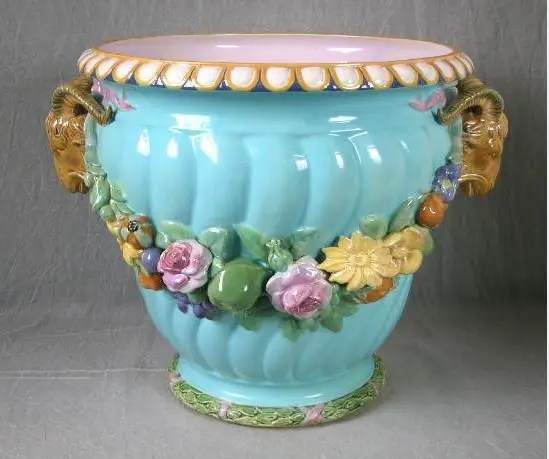
If you are looking for a kiln for your home, then it’s better to go with an electric kiln. It is the most common and convenient way out. Also, it doesn’t require venting because of its small size. Electric kilns are quite cheap as compared to gas kilns and hence are economical. However, gas kilns are expensive, larger in size, and require an air inlet and a flue.
Now, the electric and gas kiln glazes look different because of the oxidation and reduction processes that happen during firing. Several chemical processes take place during firing, which depends upon the amount of oxygen present in the kiln at that time. So, electric kilns have an oxidation atmosphere, whereas gas kilns have a reduction atmosphere.
An oxidation atmosphere produces brighter colored glazes, whereas a reduction atmosphere produces dark and intense colored glazes. This ultimately gives rise to different colored fired glazes produced from the two types of kilns.
-
Purpose of Usage – Fancy or Utilitarian?
Before you choose the glaze, you need to be specific about the purpose you want it to be used for. Decide whether you want your piece of pottery to be a decorative item in your living room, bedroom, etc. or do you want it to be utilitarian so that it can serve various useful purposes? Once you know what you want, you can select the glaze accordingly.

If you want to use it in the kitchen for cooking or eating purposes, then you will need a food-safe glaze. Therefore, it is recommended to go for a lead-free glaze, as lead is toxic and harmful to health. One can opt for a readymade non-toxic pottery glaze like the AMACO F Lead-Free Non-Toxic Glaze. But, if you want it to be used as a decorative item, you can always choose lead-based glaze because of its bright and lustrous surface.
-
Glaze Finishing:
Think whether you want a matte finish glaze or a glossy finish glazed surface. Though you can convert matte glaze into glossy finished glaze through several methods, you can’t do it the other way around. Also, these kinds of methods aren’t appropriate and efficient. Therefore, it is always suggested to think about the finishing beforehand and choose the pottery glaze accordingly.
You need to consider the glaze’s texture and properties before choosing it as your option. So, let’s look at some of the textured glazes that you can select to give a finishing touch to your pottery piece.
Glaze Texture |
Properties |
| Clear Glaze | It gives a clean-looking piece of ceramic ware. It can be applied directly onto the clay body. It seals the underglaze decoration. It is like adding a translucent glaze on the top of your pottery piece. |
| Powdered Glaze | It must be mixed with water to convert it into a liquid form. It is pretty cheap. You need to be cautious of bubble formation while mixing water with the glaze. |
| Colored Glaze | There are a plethora of choices available in the market to choose from. Decide whether you want bold colors or light pastel colors. You can apply different colored glazes together to give a layering effect on your pot. |
| Opaque Glaze | It blocks the color of the underlying clay body. It allows you to experiment with whatever color or underglaze you want. |
| Breaking Glaze | This glaze is thin over certain areas of the pottery piece. It helps to highlight different textures on the ceramic surface. It enhances the glazing pattern of the pottery piece. |
| Flowing Glaze | This glaze comes in fluid form. It works on a very low firing temperature but gives results that of the high firing process. When fired, they move in fluid form and bring out a beautiful running effect on the pot. |
What is Overglaze and Underglaze?
Both of them are types of decoration that are applied beneath or over the glazed surface.
Underglaze decoration is applied to unfired pottery, over which a transparent glaze is usually applied to keep it intact. The pigments, used in underglaze, fuse with the glaze to give an underneath effect of decoration. Blue and white porcelain is the best type of underglaze decoration.
Overglaze decoration is done upon the fired layer of the glaze. It uses enamel colors. Also, it usually requires a second firing at a low temperature. This type of glaze gives a more decorative and glossy outlook to the pottery item.
With time, a new method has also evolved that is known as in-glazing. In this method, paints are applied just before firing onto the glaze. In the firing process, it gets incorporated within the glaze.
Tools Used in Glazing:
It depends on whether you want to opt for a dipping method or a brushing method. Both of these methods are used for glazing a pottery piece.
For the dipping method, you would require a pair of gloves, a paddle, a bucket, tape, and a mug.
However, in the case of the brushing method, you will need various artistic tools like different sets of brushes, tongs, paddles, plastic sieves, sponges, etc.
Benefits of Glazing:
Using glazes is not an easy task. It requires sustained practice and experimentation. You must consider several factors before applying the glaze to your pottery piece. Nevertheless, glazing provides certain benefits, check them out below.
- It helps to make the pottery item waterproof.
- Glazed pottery items are quite easy to clean.
- They can serve to decorate your house.
- Lead-free glazed pottery items are food-safe and look beautiful too.
- Glazes seal the porosity of the unglazed biscuit earthenware to make it suitable for holding liquids.
Conclusion:
Glazing is an artistic technique to give life to an ordinary pottery piece. It is no doubt a complicated procedure, but the results are a treat to the eyes. Modern pottery is incomplete without glazing. It brings out the worth of the pottery item. However, it is vital to consider the components that it has before using it for various purposes.
You should be extra cautious while choosing it for your dining use. Also, there are several environmentally friendly glazes available in the market. It is highly suggested to play your part in saving the environment by choosing lead-free glazes. But the final choice lies with you. Whichever glaze you may opt for, just keep all the factors affecting it and the properties in your mind.
Happy Sculpting!

